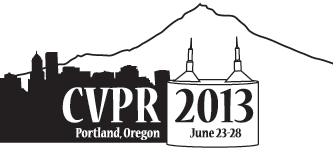-
What Is a "Good" Periocular Region for Recognition?
AbstractIn challenging image acquisition settings where the performance of iris recognition algorithms degrades due to poor segmentation of the iris, image blur, specular reflections, and occlusions from eye lids and eye lashes, the periocular region has been shown to offer better recognition rates. However, the definition of a periocular region is subject to interpretation. This paper investigates the question of what is the best periocular region for recognition by identifying sub-regions of the ocular image when using near-infrared (NIR) or visible light (VL) sensors. To determine the best periocular region, we test two fundamentally different algorithms on challenging periocular datasets of contrasting build on four different periocular regions. Our results indicate that system performance does not necessarily improve as the ocular region becomes larger. Rather in NIR images the eye shape is more important than the brow or cheek as the image has little to no skin texture (leading to a smaller accepted region), while in VL images the brow is very important (requiring a larger region).
Related Material
[pdf][bibtex]@InProceedings{Smereka_2013_CVPR_Workshops,
author = {Smereka, Jonathon M. and Kumar, B.V.K. Vijaya},
title = {What Is a "Good" Periocular Region for Recognition?},
booktitle = {Proceedings of the IEEE Conference on Computer Vision and Pattern Recognition (CVPR) Workshops},
month = {June},
year = {2013}
}
These CVPR 2013 workshop papers are the Open Access versions, provided by the Computer Vision Foundation.
Except for the watermark, they are identical to the accepted versions; the final published version of the proceedings is available on IEEE Xplore.
Except for the watermark, they are identical to the accepted versions; the final published version of the proceedings is available on IEEE Xplore.
This material is presented to ensure timely dissemination of scholarly and technical work.
Copyright and all rights therein are retained by authors or by other copyright holders.
All persons copying this information are expected to adhere to the terms and constraints invoked by each author's copyright.

